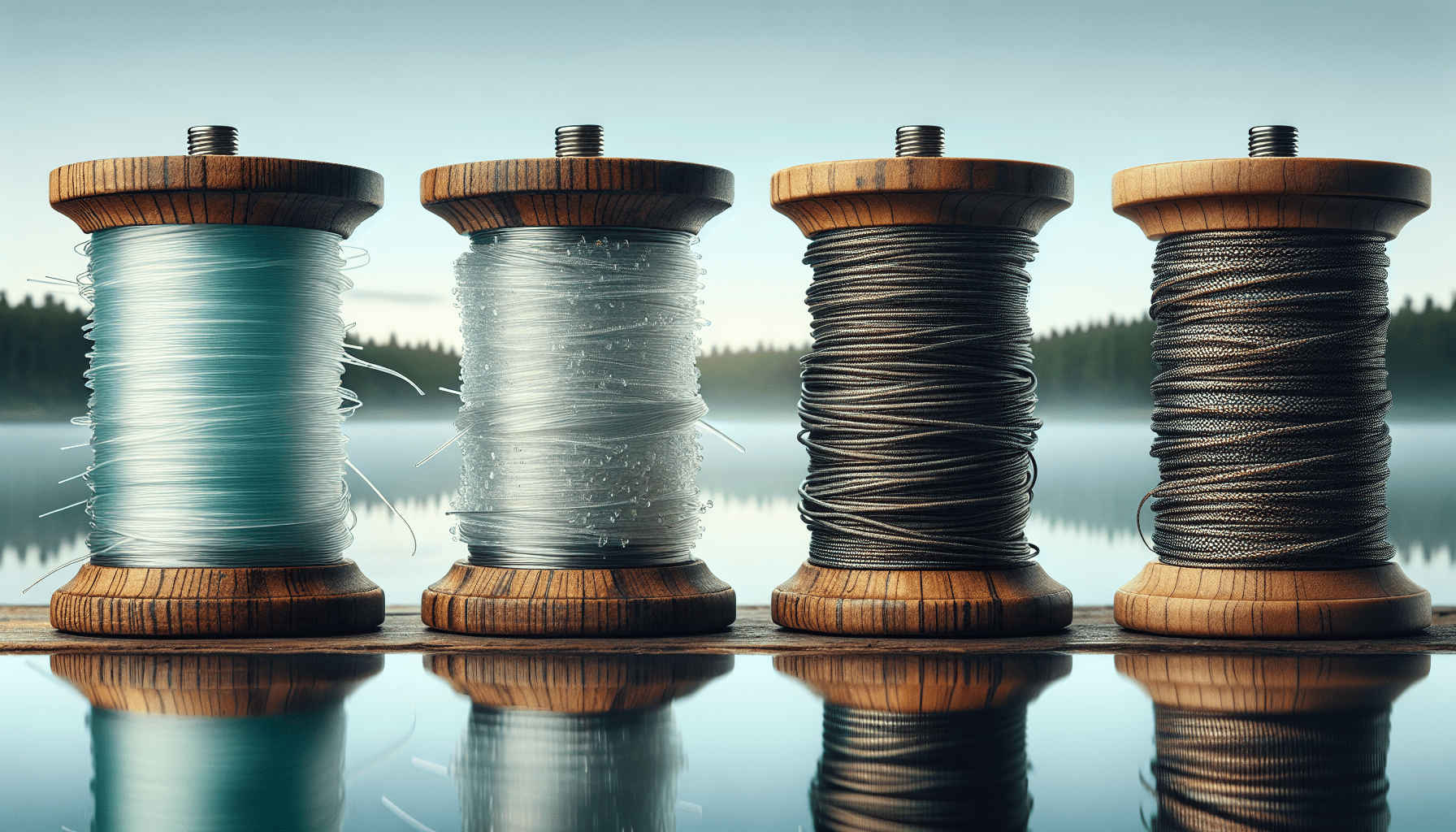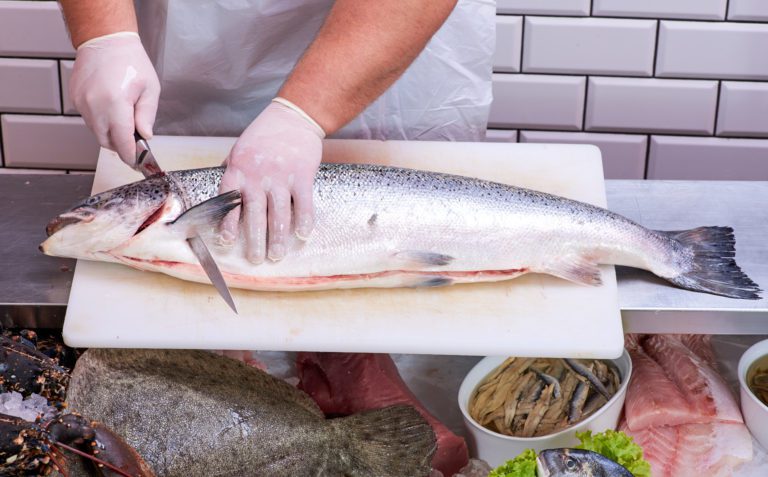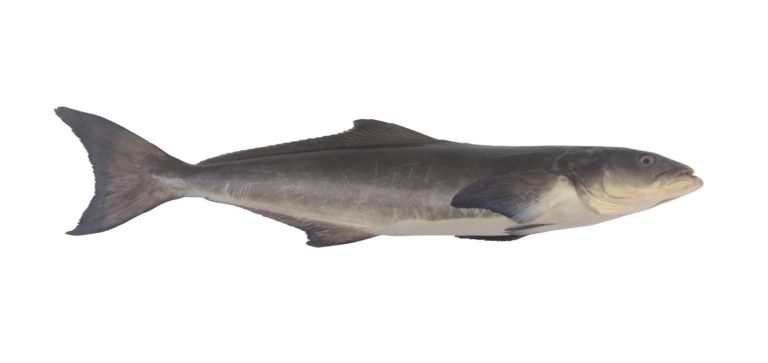Top Choices Revealed: Best Line for Surf Fishing Success
Are you in search of the best line for surf fishing? Look no further. At the heart of every successful surf fishing trip is a line that’s strong, casts well, and suits your target species. This informative guide breaks down the top choices for monofilament, fluorocarbon, and braided lines, ensuring you make a selection that ups your surf fishing game. Get ready to hit the shore with confidence and catch fish!
Key Takeaways
- Surf fishing lines come in three types—Monofilament, Fluorocarbon, and Braided—each with unique properties suitable for different scenarios in surf fishing.
- The pound test of the fishing line should be matched to the target species, casting distance, and prevailing surf and weather conditions for optimal fishing success.
- In selecting a surf fishing line, factors such as compatibility with surf rods, spinning reels, terminal tackle, knot strength, abrasion resistance, and sensitivity are critical for an effective setup.
Decoding Line Types for Surf Fishing

Lines for surf fishing serve as the essential connection between anglers and their catch. Among these are three primary varieties: Monofilament, Fluorocarbon, and Braided lines, each with special characteristics tailored to different situations within surf fishing.
Now let’s unravel the complexities of these various line types.
Monofilament Magic
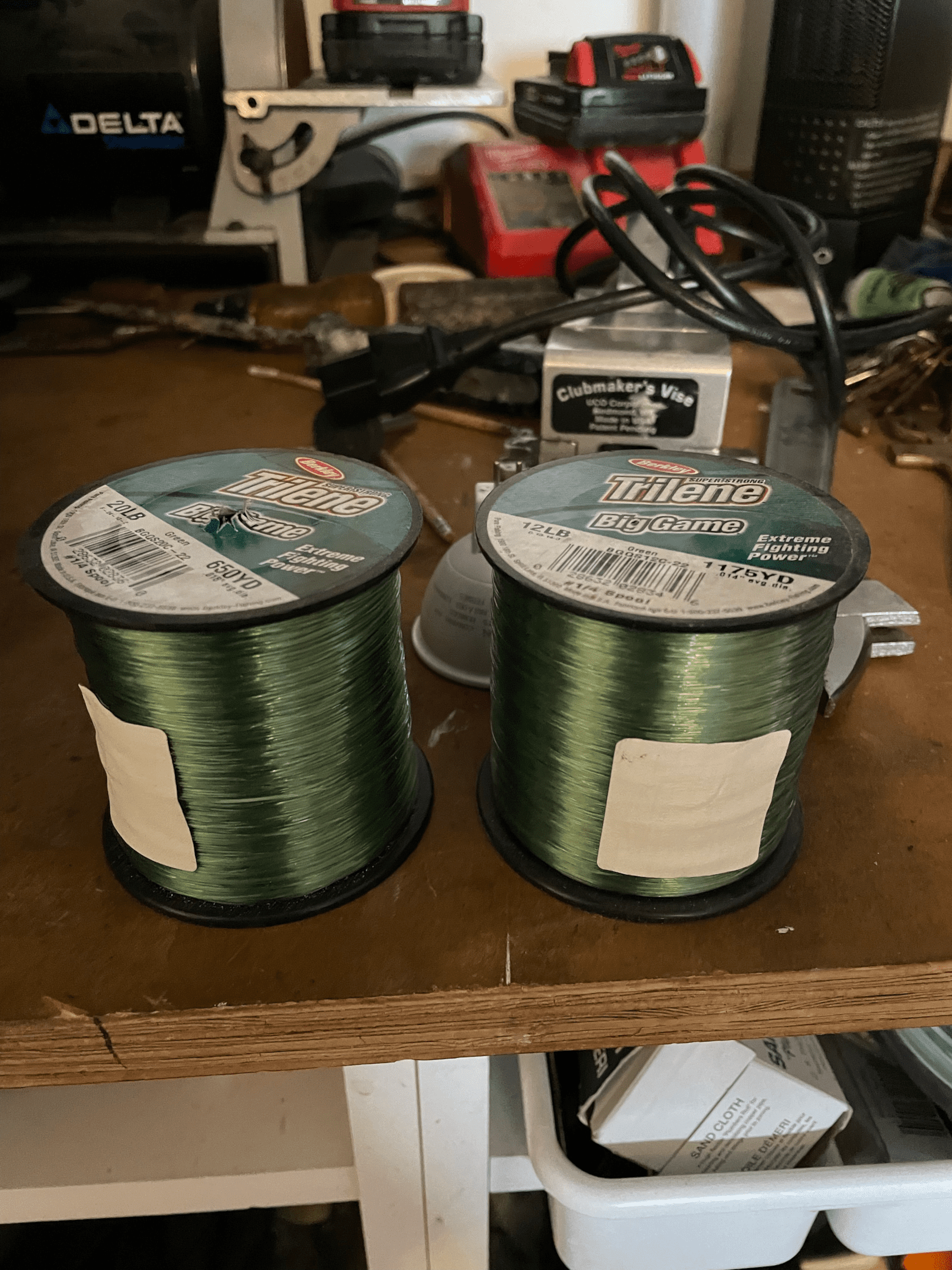
Surf anglers often favor monofilament lines as their trusted ally, owing to their exceptional shock-absorbing qualities that stand up well against the vigorous strikes from larger fish species including sharks and striped bass. It’s clear why they are a preferred choice for many!
Fluorocarbon Finesse
Fluorocarbon line, with its near invisibility beneath the water’s surface, acts much like an unseen ninja to provide anglers an edge when pursuing cautious fish species like King Mackerel and Spanish Mackerel. Its minimal visibility is paired with exceptional abrasion resistance and heightened sensitivity, positioning it as a preferred option for adeptly presenting both lures and natural baits.
Braided Line Breakdown
In the realm of surf fishing, braided lines stand out as the powerhouse option. It’s superior strength-to-diameter ratios enable anglers to employ thinner yet stronger lines with greater test strengths, facilitating a more adaptable and effective utilization of the fishing line.
Due to their minimal stretch and heightened sensitivity, braided lines excel at conveying even subtle bites from great lengths back to the angler—qualities that are absolutely critical when engaging in surf fishing.
Matching Line Weight to Surf Fishing Goals
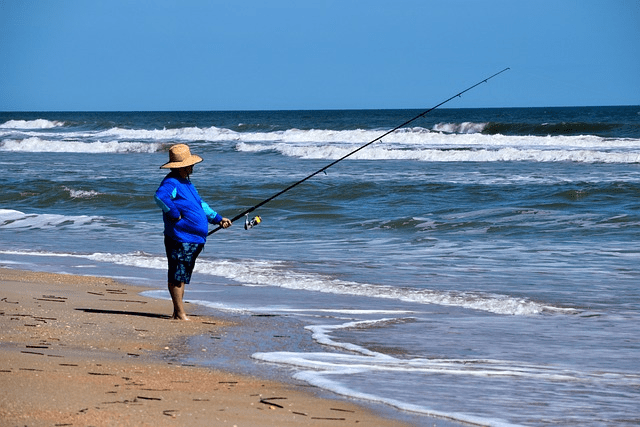
Choosing the right pound test is crucial for successful surf fishing. Whether it’s thin lines suited for catching smaller fish or thicker ones designed to haul in larger predators, the decision of which pound test to use is an essential aspect of surf fishing.
Target Species Tactics
For optimal outcomes, your fishing line should be suitably matched with the species you aim to catch. For example, when you are fishing for ladyfish, 8 lb test should be more than enough to handle even the largest ones, but if I am targetting sharks or tarpon, a minimum of 50 lbs test is required in order to avoid losing the fish on a broken line.
Casting Considerations
In surf fishing, achieving the optimal balance between the strength of your line and its casting distance is crucial. This equilibrium hinges on the pound test of your line and the capacity of the rod and reel to handle the line. Pay attention to a rod’s recommended line weight, this will show you the optimal range of test to use. Similarly, with reels, pay attention to line/braid capacity recommendations to optimize your casting distance.
Enhancing Performance: Line Features for Surf Anglers
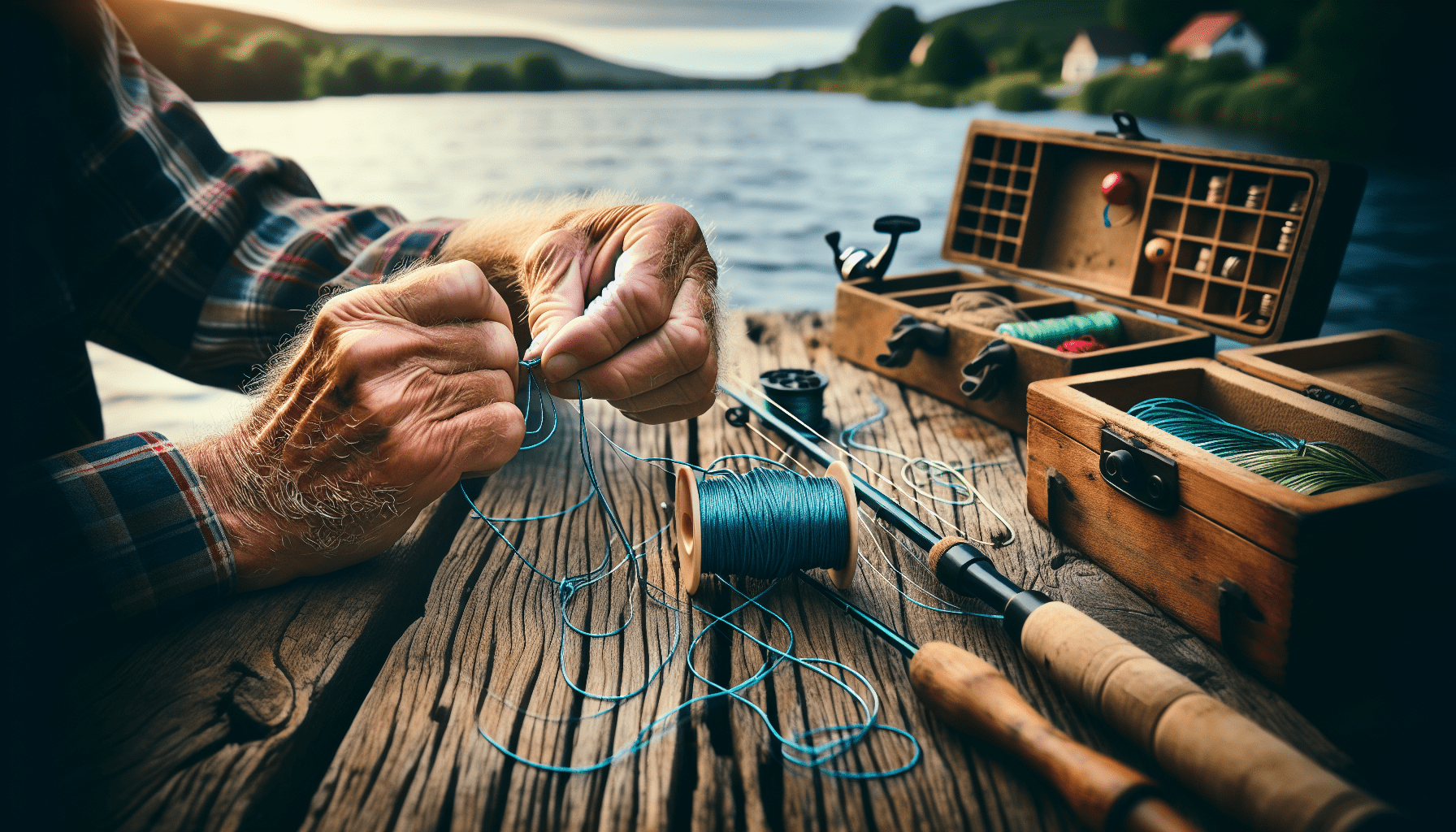
Choosing the right surf fishing line isn’t simply a matter of strength, but also about its overall performance. Optimal surf fishing lines are those that provide a harmonious blend of performance attributes to ensure the success of your angling excursion.
Knot Strength Necessities
Knot strength serves as the crucial glue holding your surf fishing setup together. A poorly tied knot can result in a frustrating beach day, but a robust and properly executed knot might just be what turns a decent outing into an exceptional one. A few knots that are popular in the angling community are the Palomar Knot, Uni Knot, and the Non-Slip Knot.
Abrasion Resistance Attributes
In the challenging conditions of surf fishing, it is essential for your fishing line to withstand the environment. A key characteristic that a surf fishing line should possess is abrasion resistance. This ensures that it can resist damage when rubbing against rocks, reefs, and various underwater structures while maintaining its integrity. Mono and fluorocarbon lines offer a bit more resistance in this regard compared to braided fishing lines.
Sensitivity and Stretch
Sensitivity and stretch in a fishing line are crucial for perceiving even the most subtle nibbles and enabling swift reactions, thereby enhancing your probability of securing a catch. A braided line is best for detecting subtle bites of fish in the surf.
The Role of Tackle in Line Selection
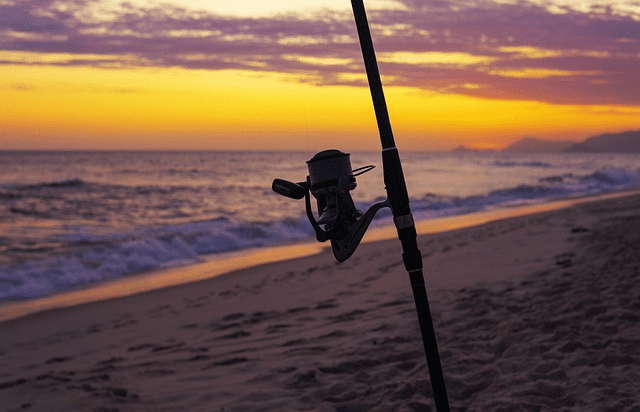
Selecting the appropriate tackle is crucial when deciding on a fishing line, akin to choosing the perfect attire for a special occasion.
Rod Synergy and Reel Compatibility
For optimal performance in surf fishing, it’s essential that your primary tool, the surf rod, harmonizes with your line. A compatible duo enhances the grace of their movements and casting distance whereas an incompatible pair results in disarray. For example, a 10 to 12 foot surf rod should be paired with a 4000 to 5000 series spinning reel and 15 to 20 lbs test. Adjust sizes of your tackle up or down depending on the size of your target species.
Terminal Tackle Tips
Selecting appropriate terminal tackle can greatly influence your success in surf fishing. Using proper hooks, weights, and leaders is vital to effectively present your bait and enhance your probability of landing a catch.
Expert Advice: Line Recommendations for Surf Fishing

Recognizing the intricacies of surf fishing lines, we should now reflect upon some top suggestions from seasoned fishermen. These selected lines are renowned for their exceptional efficacy in surf fishing and come highly recommended by professionals in the field.
Best Monofilament Lines
For years, monofilament lines have maintained their status as the preferred line for surf fishing among anglers due to several key advantages. These include an optimal combination of tensile strength, elasticity, and cost-effectiveness that render them a dependable option across diverse conditions encountered in surf fishing. A few mono lines to try are:
- Berkley Trilene XL
- Berkley Big Game
- Maxima Ultragreen
Top Fluorocarbon Choices
For those seeking both invisibility and robustness in their fishing endeavors, fluorocarbon lines emerge as the supreme option. Below are some of the premier selections that consistently demonstrate excellence while being put to the test in surf conditions:
- Daiwa J-Fluoro Samurai
- Seaguar Gold Label
- Yo-Zuri T-7 Premium
Preferred Braided Lines
Surf anglers seeking both durability and heightened sensitivity often favor braided fishing line, as these lines excel in meeting the rigorous requirements of surf fishing. A braided fishing line possesses a combination of power and perceptive capabilities, which makes it a top choice for those who indulge in this particular style of angling. A few of my favorite braided lines are:
- Sufix 832 Superline Braided Line
- Spiderwire Durabraid Braided Line
- Daiwa J-Braid Grand 8x Braided Line
The Ultimate Surf Fishing Line Setup
Mastering the setup of your surf fishing line requires expertise, finesse, and a bit of instinct. We’re going to explore the optimal configuration for surf fishing lines, catering to those who favor light tackle methods as well as enthusiasts preferring robust equipment.
Light Tackle Techniques
To optimize your beach fishing adventure using light tackle, whether you’re aiming to reel in sharks or just enjoy surf fish alongside fellow anglers employing various surf fishing rigs, here are some tips and strategies worth considering. The key to successful light tackle surf fishing lies in the balance between the agility of your equipment and the strength required to handle your catch. It’s about marrying the thrill of feeling every twist and turn of your quarry with the confidence that your gear won’t let you down.
When using light tackle, choose a rod with a sensitive tip to detect even the most subtle bites but with enough backbone to set the hook firmly. Pair your rod with a high-quality reel that offers a smooth drag system, allowing for precise adjustments during a fight with a spirited fish. The line should be thin enough to cast small lures or baits a considerable distance, yet strong enough to withstand the abrasive nature of the surf environment.
Remember, light tackle surf fishing isn’t just about the size of the tackle but also about the approach. Stay patient, remain alert, and enjoy the challenge of coaxing a catch with a finesse that only light tackle can provide.
Heavy Hitters’ Hardware
When it comes to surf fishing for the heavy hitters of the sea, like the muscular drum or the elusive tarpon, the right gear is essential. You’ll need a rod that can withstand the powerful lunges of these behemoths, typically in the range of 12 feet to provide the necessary leverage. A strong, durable reel is also a must-have, one that can handle heavy line and provide a robust drag system to wear down the stamina of these aquatic gladiators.
Choosing the correct line is paramount. Braided lines are often the go-to for this type of surf fishing due to their superior strength and lack of stretch, which allows for a direct connection to the fish, ensuring that every headshake and surge is felt in your hands. This direct feedback is crucial for timing your reactions during the battle.
But it’s not just about strength—the diameter of the line is also a factor. A thinner line cuts through the water and air with less resistance, enabling longer casts to reach the spots where the big fish roam. Yet, it must be tough enough to resist the abrasive nature of surf, including rocks, shells, and sand that can fray and weaken lesser lines.
In addition to the right rod, reel, and line, the terminal tackle must also be up to the task. Heavy-duty hooks, strong swivels, and leaders that can withstand the toothy grins of your quarry are all part of the equation. Remember, the weakest link in your setup will be the first to give, so ensure every component is of the highest quality.
Summary
As we’ve seen, the choice between monofilament, fluorocarbon, and braided lines is not just about preference but about understanding the unique challenges and opportunities that each type presents. Monofilament lines, with their shock-absorbing qualities, are akin to a trusty surfboard that can handle the waves with grace, while fluorocarbon lines, nearly invisible in the aquatic realm, serve as the stealthy approach to wary fish. Braided lines, with their impressive strength-to-diameter ratio, are like the powerful jet ski that cuts through the water, providing the angler with a distinct advantage in feeling the slightest nibbles. Remember, the pound test should match your target species and the surf conditions, and always ensure your knots are tied with precision to avoid the disappointment of a lost catch.
With these insights, you’re now better equipped to select the line that will help you reel in your next big catch from the surf!
Frequently Asked Questions
Is mono or braid better for surf fishing?
Due to its stretching capabilities, monofilament line is more advantageous for surf fishing as it can better absorb the force from large tide movements and the pressure exerted by the tide.
What is the best color line for surf fishing?
When selecting a line for surf fishing, opting for camouflage or clear hues is often recommended because they blend in with the environment and remain unseen by fish, thereby enhancing your likelihood of catching them. After determining the appropriate pound test and line color, you should decide whether to use monofilament, fluorocarbon, or braided lines.
What is the best line weight for Surfcasting?
For optimal surfcasting, the weight of the line should match the weight of your sinker. Typically, a 30lb shock leader is suited for a 3-oz sinker. Increase to a 40lb shock leader for use with a 4-oz sinker and opt for a 50lb when utilizing a 5-oz sinker.
Incorporating an appropriate shock leader is essential in avoiding loss of equipment while casting.
What type of line should I use for surf fishing?
When engaging in surf fishing, it’s advisable to opt for monofilament, also known colloquially as “mono,” due to its versatility and frequent use across a range of applications specific to line for surf.
How does line weight affect surf fishing?
Choosing the appropriate pound test for your line is crucial in surf fishing because it influences not only the distance you can cast, but also how strong your line will be and what size fish you are able to reel in.
It’s important to pick a pound test that matches your objectives when engaging in surf fishing.

